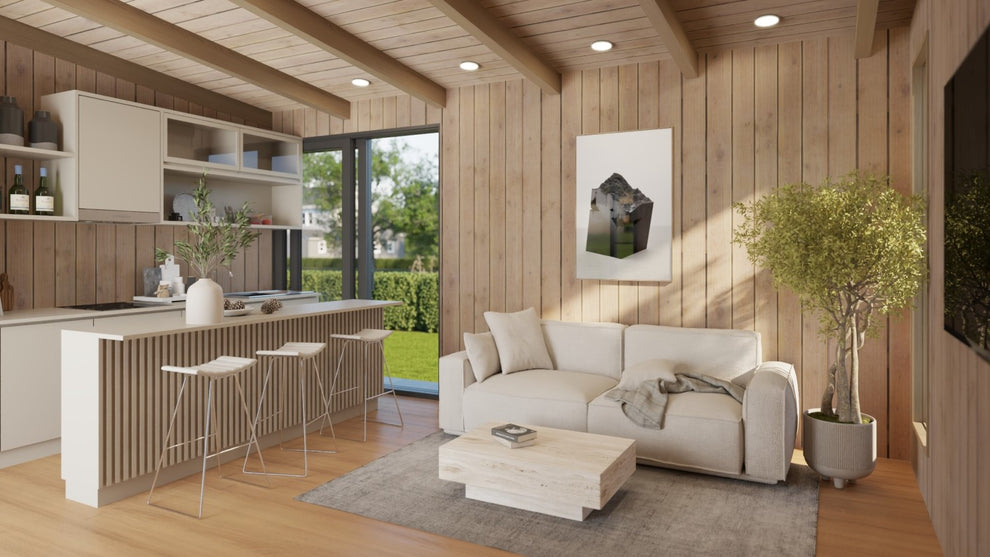If you’ve ever dreamed of simplifying your life, cutting down costs, and embracing sustainable living, tiny home kits might be the perfect starting point. These pre-engineered housing packages make it easier than ever to build your own compact, efficient, and eco-friendly home. Whether you’re planning a cozy backyard guest suite, an off-grid retreat, or a minimalist full-time residence, understanding how these kits work—along with their prices, materials, and setup requirements—can help you make an informed decision.
What Are Tiny Home Kits?
Tiny home kits are prefabricated building packages that include all the essential materials needed to construct a small house, typically ranging from 150 to 600 square feet. Instead of hiring an architect or sourcing materials separately, you receive a ready-to-assemble kit that simplifies the entire process. Kits usually include pre-cut panels, roofing, windows, doors, hardware, and assembly instructions—designed for either DIY assembly or professional installation.
This approach combines cost savings, efficiency, and flexibility. Many people opt for tiny home kits because they make homeownership more accessible and customizable without the stress of traditional construction.
Average Prices of Tiny Home Kits
The cost of tiny home kits depends on several factors—size, materials, insulation, finishes, and additional features such as plumbing and electrical systems. On average, kits start at around $30,000–$60,000 CAD for basic designs and can go higher for larger or luxury models.
For example, udiykits—a Canadian company specializing in DIY housing kits—offers tiny home kits starting at $35,000 CAD. They also provide garden suites and four-season dome kits. What sets them apart is the use of Structural Insulated Panels (SIPs), which ensure high energy efficiency, durability, and compliance with Canadian building codes.
Whether you plan to build your own home or prefer professional help, UDIYKits offers both DIY and installation services across Canada, making the process smoother and stress-free.
Best Materials for Tiny Home Kits
Choosing the right materials is key to ensuring your tiny home remains strong, weather-resistant, and comfortable year-round. High-quality tiny home kits often use:
- Structural Insulated Panels (SIPs):
These are advanced composite panels consisting of an insulating foam core sandwiched between two structural facings, typically oriented strand boards (OSB). SIPs provide superior insulation, structural strength, and energy efficiency—making them a top choice for Canadian climates. - Steel Frames:
For those in areas prone to pests, humidity, or shifting soil, steel-framed kits are an excellent option. They are fire-resistant and long-lasting, though slightly more expensive. - Wood and Timber:
Traditional wooden framing remains popular for its natural aesthetic and ease of customization. Many DIY enthusiasts prefer wood because it’s familiar and easy to work with.
udiykits.com uses SIPs for most of their tiny home kits, offering a balance between sustainability and strength. This means your home will stay warm in winter, cool in summer, and energy-efficient all year long.
Setup Tips for Building Your Tiny Home Kit
Building a tiny home from a kit may sound intimidating at first, but with proper planning, it can be a rewarding project. Here are some tips to help you succeed:
- Plan Your Foundation:
Decide whether you want a permanent foundation or a movable platform. Check your local building codes and zoning laws before starting. - Prepare the Site:
Clear the land, level the ground, and install proper drainage. This step is crucial for preventing moisture damage and ensuring a stable build. - Follow Instructions Carefully:
Most tiny home kits come with detailed manuals or even video tutorials. Follow them step-by-step to avoid mistakes and ensure a solid structure. - Use the Right Tools:
Basic tools like drills, screwdrivers, levels, and ladders are essential. Some kits may require specialized tools—check with your supplier beforehand. - Consider Professional Help:
Even if you plan to go the DIY route, hiring professionals for electrical, plumbing, or roofing work can save time and ensure safety. Companies like udiykits also offer installation services if you prefer a hands-off approach.
Why Choose Tiny Home Kits?
The appeal of tiny home kits goes beyond affordability. These homes promote sustainable living, energy efficiency, and minimal environmental impact. They allow you to downsize without sacrificing comfort and give you the freedom to live where you want—be it a lakeside plot, a forest retreat, or your backyard.
If you’re ready to explore the possibilities, visit udiykits. Their high-quality, code-compliant tiny home kits are designed to make sustainable living both stylish and practical. With customizable designs, expert support, and professional installation available nationwide, they’re helping Canadians bring their dream homes to life—one kit at a time.
Final Thoughts
Tiny home kits are more than just a housing trend—they represent a lifestyle shift toward simplicity, independence, and environmental responsibility. Whether you want to build your first home, create a rental suite, or add an affordable backyard guest house, tiny home kits from udiykits.com offer a cost-effective, energy-efficient, and customizable solution built to last.

